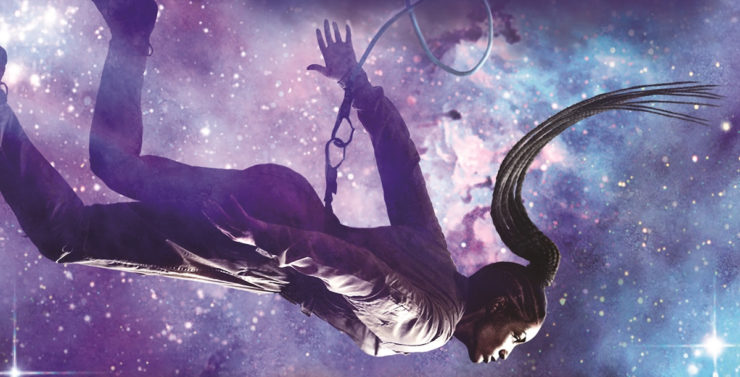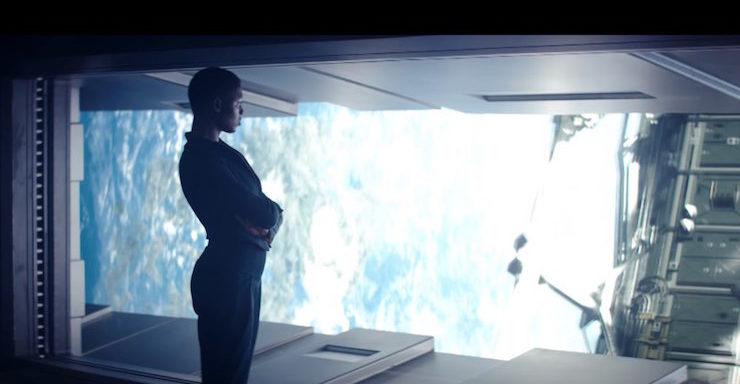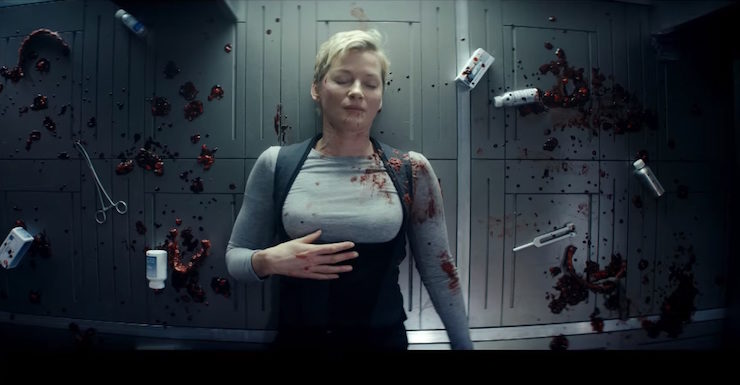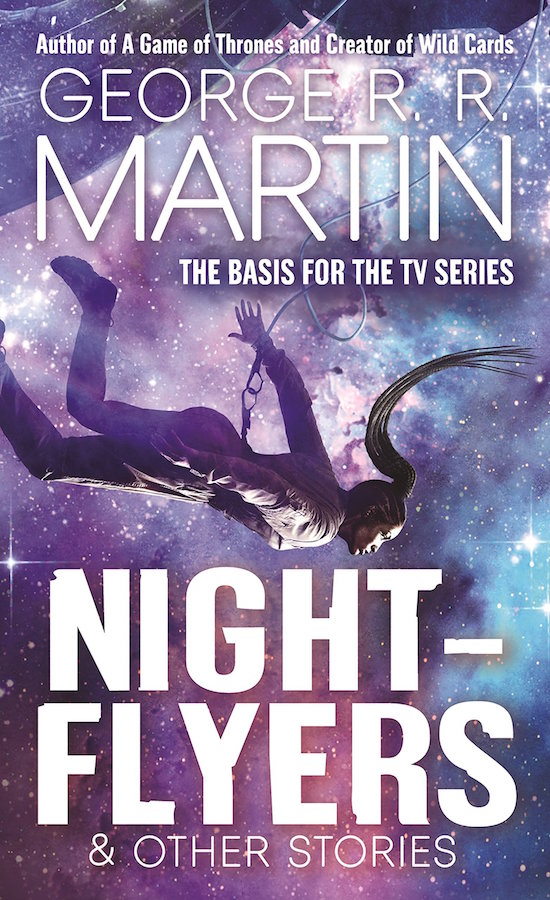“Some of the fans of A Song of Ice and Fire seem to believe that I burst onto the writing scene full-grown with the publication of the first book of the series,” George R.R. Martin writes in the “Oldies But Goodies” section of his official website, “but actually I had been a professional writer for twenty-five years when A Game of Thrones was published in 1996.” Before he set sail for Westeros, before he had even begun constructing the intricate history of ASOIAF, Martin was exploring the far reaches of space writing sci-fi/horror hybrids in another self-created universe known as the “Thousand Worlds.”
In this GRRM-verse exists Nightflyers, a “haunted spaceship” novella that is being resurrected as a television series on Syfy. If you’ve never heard of the Nightflyer, the manrealm, the volcryn, or Melantha Jhirl—that’s where this primer comes in handy! Since its publication nearly forty years ago, Nightflyers has existed in many forms: novella, expanded novella, movie, and now a TV show that will turn a very gory one-shot story into an ongoing series. So, it’s uncharted territory for even the fans! Our Nightflyers 101 will tell you everything you need to know before Syfy’s new adaptation premieres.
Nightflyers the Novella (1980)
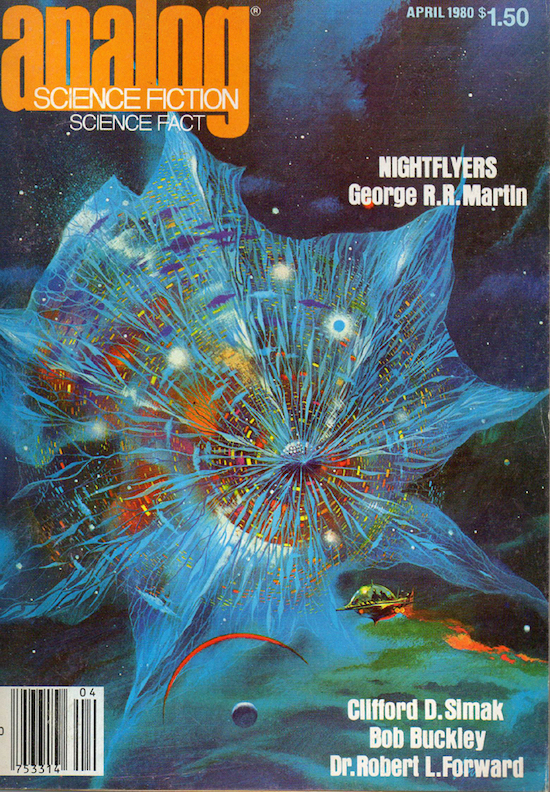
Nightflyers, as well as the Hugo and Nebula-winning novelette Sandkings, was the direct result of a writer being told he couldn’t do something: “[T]he inspiration for both of those stories,” Martin explained, “was a statement I read somewhere by a critic, to the effect that SF and horror was opposites, and fundamentally incompatible. As a lifelong fan of both, that assertion struck me as nonsense, so I set out to prove it wrong by blending the two genres together. Worked out pretty well for me.”
On the fringes of the universe, a scientific expedition made up of nine misfit academics has been tasked with studying the volcryn, a shadowy alien race. Yet there are potentially greater mysteries on their own ship: The Nightflyer, the only vessel available for the mission, is a technological marvel: fully autonomous and manned by a single human. Yet Captan Royd Eris cuts himself off from the crew, communicating through only voice or hologram, more resembling a ghost than a leader.
He may not be the only unknown presence on the Nightflyer, as telepath Thale Lasamer detects a malevolent force lurking—and Eris’ denials that there is an unknown entity on the ship go out the airlock when this other force begins a bloodthirsty murder spree. The only hope against the terror is Melantha Jhirl, a genetically enhanced outcast whose intelligence and stamina outranks her human crew members. But is it enough to escape the clutches of the Nightflyer’s murderer?
The original version, clocking in at 23,000 words, was published in Analog Science Fiction and Fact in 1980. The next year, Martin expanded the novella to 30,000 words so that it could be included in Dell’s Binary Star series, which pairs two works in one book; Nightflyers joined Vernor Vinge’s cyberpunk novella True Names. The later Nightflyers, which was also published in Bluejay Books’ 1985 collection, is Martin’s preferred version.
In 1981, Nightflyers was nominated for the Hugo Award for Best Novella. While it did not win the Hugo, it did win the Locus Award (for Best Novella) and the 1983 Seiun Award in Japan (for foreign short fiction). It was one of the major adventures, though not the first, in what Martin called the “manrealm,” or the “Thousand Worlds” universe.
The “Thousand Worlds” Universe
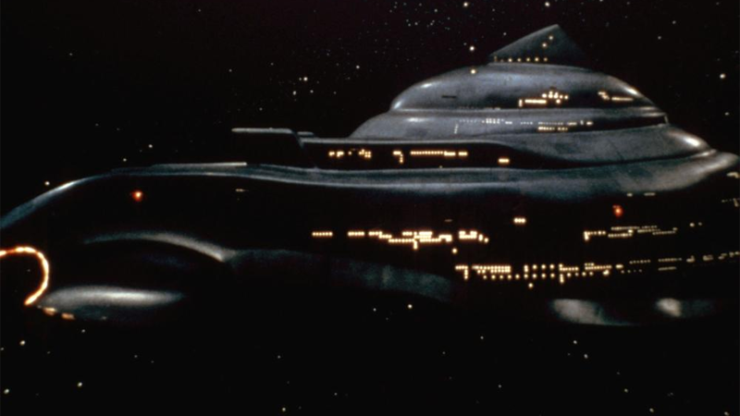
In fact, both Martin’s first published work, “The Hero” (which appeared in Galaxy Magazine in 1971), and his first novel, Dying of the Light (published 1977), hail from the manrealm. Redditor wbhoy adeptly sums up both the reason for the naming as well as the series’ place within Martin’s body of work, in an r/asoiaf thread from 2016:
Back when Martin first started publishing, most of his work was within the sci-fi genre, and a great number of his stories, including his first published novel, were set in the same future setting, which eventually came to known as his Thousand Worlds setting.
As to the actual title of the setting, it was a reference to the “thousand” worlds of humanity leftover from the collapse of an enterprising human empire originating on Earth, one that collapsed due to wars of attrition with aliens on two fronts. After the collapse, interstellar flight was reestablished eventually, and a lot of the stories involve the human cultures long separated coming back into contact with one another.
It is a great setting with some of Martin’s best non-ASOIAF related writing. I highly recommend them because they are enjoyable in their own right, and they are fascinating to read within the context of his development as a professional writer as he develops his ideas and concepts about plot and character, his fine-tuning of his world building skills, and his mastering POV and structure.
The nearly two dozen stories, novelettes, novellas, and novels were all mostly written in the 1970s and ’80s. After A Game of Thrones’ publication in 1996, Martin primarily turned his attention to A Song of Ice and Fire. Yet with so many planets to explore, fans have been tempted to draw connections to ASOIAF: Who’s to say that the world on which Westeros and its neighbors are on couldn’t be one of the Thousand Worlds? After all, A Song for Lya’s two protagonists are named Robb and Lyanna; and a deity called Bakkalon, or the Pale Child, appears in the story “And Seven Times Never Kill Man.” Surely that’s not coincidence? Except that it is, as Martin succinctly debunked that fan theory on his Not A Blog.
Nightflyers the Movie (1987)
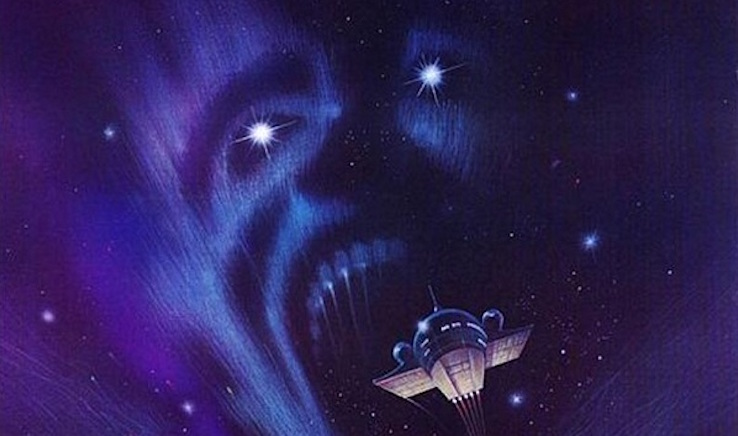
In 1984, Demon Seed screenwriter Robert Jaffe optioned the film and television rights to Nightflyers, with the end result being a rather cheesy-looking space adventure/horror. In lieu of any official synopsis to be found, this user-submitted synopsis on IMDb seems to sum it up pretty well:
Professor hires a spaceship to get to the source of weird signals from deep space. The trip is cut short however when the ship’s computer gets jealous because the captain is in love with one of the female passengers and it gets homicidal.
Martin believes that Jaffe adapted his original 23,000-word novella from Analog and not the expanded version, as many of the secondary characters’ names are changed from both the original text and the updated story. Even the main characters have different names and seem to be reimagined from the source material.
The trailer is, um, very ’80s:
That director Robert Collector adopted the pseudonym “T.C. Blake” says a lot about how the final product turned out. The New York Times called it “the talkingest movie ever to pose as a science-fiction adventure,” with unoriginal special effects and an overall murky look. While it didn’t thrill audiences, Martin nonetheless holds it in high regard in relation to what it did for his career: “Nightflyers… the movie… was not a huge hit,” he wrote in a 2017 blog post looking back at the movie. “But it’s a film that I have very warm feelings toward. Nightflyers may not have saved my life, but in a very real sense it saved my career, and everything I have written since exists in no small part because of that 1987 film.”
The Real Melantha Jhirl
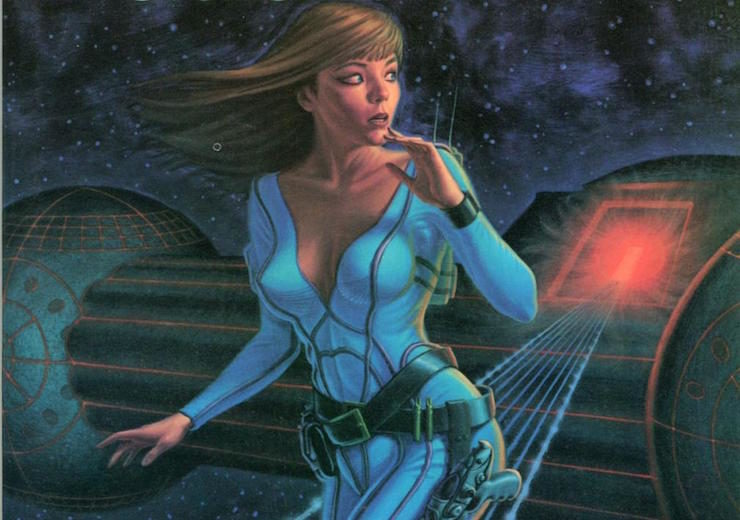
When Syfy began releasing casting information about the series, Martin took the opportunity to address an issue he’d had with the portrayal of one of the characters for over thirty years: the whitewashing of Melantha Jhirl. As Martin explained in a lengthy blog post, he had quite intentionally written Melantha, a genetically-engineered human, a self-described “improved model” whose name literally means “dark flower,” as a black woman. It was right there in the text:
Young, healthy, active, Melantha Jhirl had a vibrancy about her the others could not match. She was big in every way; a head taller than anyone else on board, large-framed, large-breasted, long-legged, strong, muscles moving fluidly beneath shiny coal-black skin. Her appetites were big as well. She ate twice as much as any of her colleagues, drank heavily without ever seeming drunk, exercised for hours every day on equipment she had brought with her and set up in one of the cargo holds. By the third week out she had sexed with all four of the men on board and two of the other women. Even in bed she was always active, exhausting most of her partners. Royd watched her with consuming interest.
“I am an improved model,” she told him once as she worked out on her parallel bars, sweat glistening on her bare skin, her long black hair confined in a net.
But when it came to releasing the first version of the book with a character on the cover, racist attitudes about what kind of cover would sell led to Melantha being portrayed as a white woman. (There was also a genre issue, Martin pointed out, in which the Bluejay Books cover seems intended “to evoke echoes from ten thousand Gothics, wherein the governess is running away from the haunted house behind her, where one window shines in the darkness.”) At the time, Martin did not consider himself—having been dropped by his previous publisher, “hanging on to my career by my fingernails”—in a position of power to dispute the cover, yet the guilt of it stayed with him through reissues and new editions:
I was unhappy with the portrayal of Melantha in 1985. As the years passed, I grew even more unhappy… with the cover, and with myself. No, I probably did not have the power to get the cover changed, not then. I had no contractual right to cover approval. But I could have tried harder, argued longer, made a bigger fuss, gone public (as other, braver writers did). Maybe I could even have withdrawn the book.
Instead I went along. I did not have the courage of my convictions. I did not believe what “everybody knew,” but I think part of me feared they might be right, and after Armageddon Rag I badly needed Nightflyers to do well. (For what’s it worth, the collection sold pretty badly in any case). When I look back now, I am ashamed.
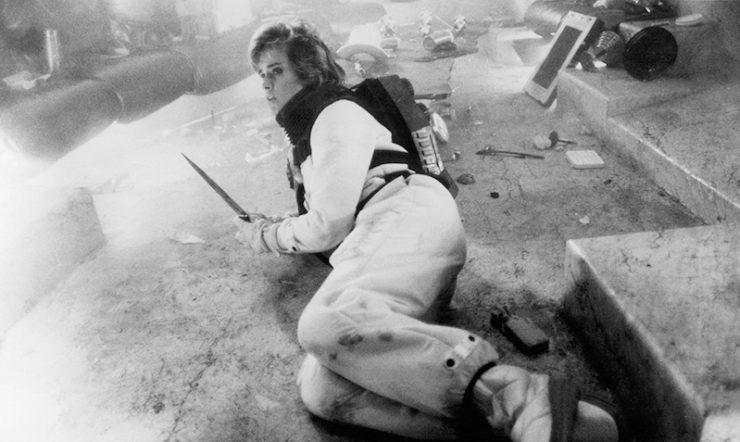
For the movie, Jaffe renamed Melantha as Miranda Dorlac, with Catherine Mary Stewart—one of the biggest names on Nightflyers’ cast at the time—playing the mission’s project coordinator (who is also somewhat telepathic, despite there being a telepath and an empath on the crew). She “did a perfectly fine job” in the role, Martin has said, but it simply didn’t match the character he had created.
So when it came time to cast for the TV series, especially for the role of Mel (as she’s called in this adaptation), Martin felt that he should not let it go by without comment. While his contract with HBO prevents him from having any real role in the development of the Syfy series, he was able to make his thoughts heard:
I had been silent twice when I should have spoken up. I was determined not to be silent a third time. So I reached out to UCP and through them to the writers and producers of the Nightflyers project and told them… well, pretty much what I’ve told you here. And, I am delighted to say, they listened.
And so Jodie Turner-Smith (The Last Ship) was cast as Melantha Jhirl:
Daniel Cerone, showrunner at the time (having since left the project), told Martin, and by extension his readers, that “[w]e’re beyond excited about her. From the start Jeff [Buhler] maintained that we needed a black actress (Jodie is British and Jamaican) to follow your original vision. We enjoyed your story about how the book publishers (and the original movie) missed the boat on Melantha and we’d love your fans to know that we’re working hard to honor your intentions.”
Nightflyers the TV Series (2018)
According to Martin, Syfy’s forthcoming television series is being developed based on the 1987 film, pursuant to the contract from 1984; Jaffe will serve as a producer. In the first-look video below, Martin describes the ten-episode season as “Psycho in space.” The official synopsis, from Syfy:
Nightflyers follows eight maverick scientists and a powerful telepath who embark on an expedition to the edge of our solar system aboard The Nightflyer—a ship with a small tightknit crew and a reclusive captain—in the hope of making contact with alien life. But when terrifying and violent events begin to take place they start to question each other—and surviving the journey proves harder than anyone thought.
The cast includes Gretchen Mol (Life on Mars, Boardwalk Empire) as Dr. Agatha Matheson, Eoin Macken (Merlin) as Karl D’Branin, David Ajala (Jupiter Ascending, Falling Water) as Roy Eris, Sam Strike (EastEnders) as Thale, Maya Eshet (Teen Wolf) as Lommie, Angus Sampson (Fargo) as Rowan, Jodie Turner-Smith (The Last Ship) as Melantha Jhirl, and Brían F. O’Byrne (Million Dollar Baby) as Auggie. Check out some behind-the-scenes footage, plus a brief teaser trailer:
As mentioned above, Martin’s overall deal with HBO prevents him from having an active role in this adaptation (though he will be credited as an executive producer). However, he did get a chance to read the pilot and was intrigued to see how creator Jeff Buhler and then-showrunner Daniel Cerone had expanded the narrative universe of his story:
Honestly, at first I was baffled as to how they hoped to get a series out of my story, since at the end of the novella (and the film) pretty much everyone is dead (it was a horror story, after all). But in May, UCP got me a copy of Jeff Buhler’s script, and I saw how he’d dealt with that. It was a good read, and yes, I came away with a better idea of where they’d find a few seasons.
Cerone departed the adaptation in early 2018 due to creative differences, with Buhler (who penned the pilot) taking over as showrunner. No word yet on premiere date, though it’s expected to be sometime in the fall.
Nightflyers the Novellas Redux (2018)
Two, count ’em two, new editions of Nightflyers will be released in late May to coincide with the new series. Tor Books will publish Nightflyers & Other Stories on May 29; this is a reissue of the 1985 short story collection, including the expanded novella and five additional stories:
- “Override”
- “Weekend in a War Zone”
- “And Seven Times Never Kill Man”
- “Nor the Many-Colored Fires of a Star Ring”
- A Song for Lya
As Martin explained in his blog post, both Lya (his first Hugo winner) and “Seven Times” are part of the Thousand Worlds universe; the other stories are hard-SF and near-future dystopia, but in different settings. The collection’s cover, by Stephen Youll:
Buy the Book


Nightflyers & Other Stories
Bantam Spectra will also release Nightflyers: The Illustrated Edition (the expanded novella) on May 29 as a standalone hardcover, with fifteen interior illustrations and two endpapers from David Palumbo. Here’s the cover, by Larry Rostant:
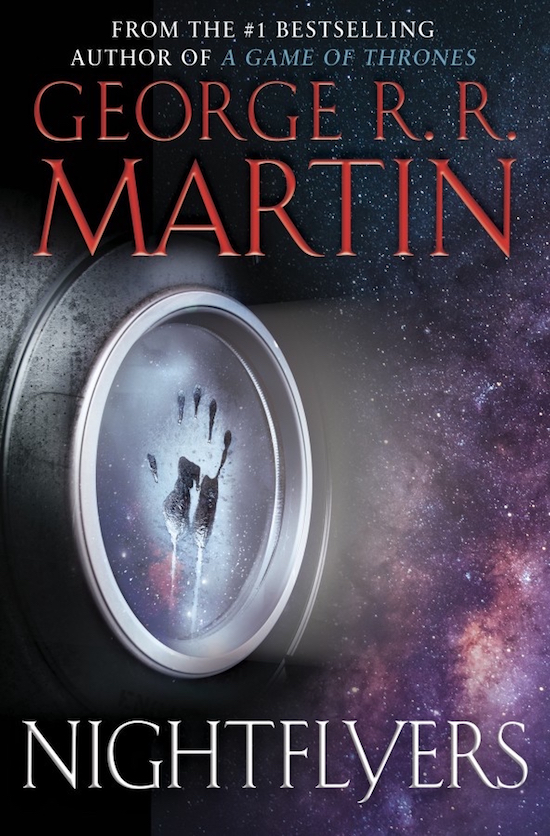
Buy the Book


Nightflyers: The Illustrated Edition
While both physical copies will be published May 29, the ebook of Tor’s Nightflyers & Other Stories is available today, March 27. Welcome back aboard the Nightflyer.










